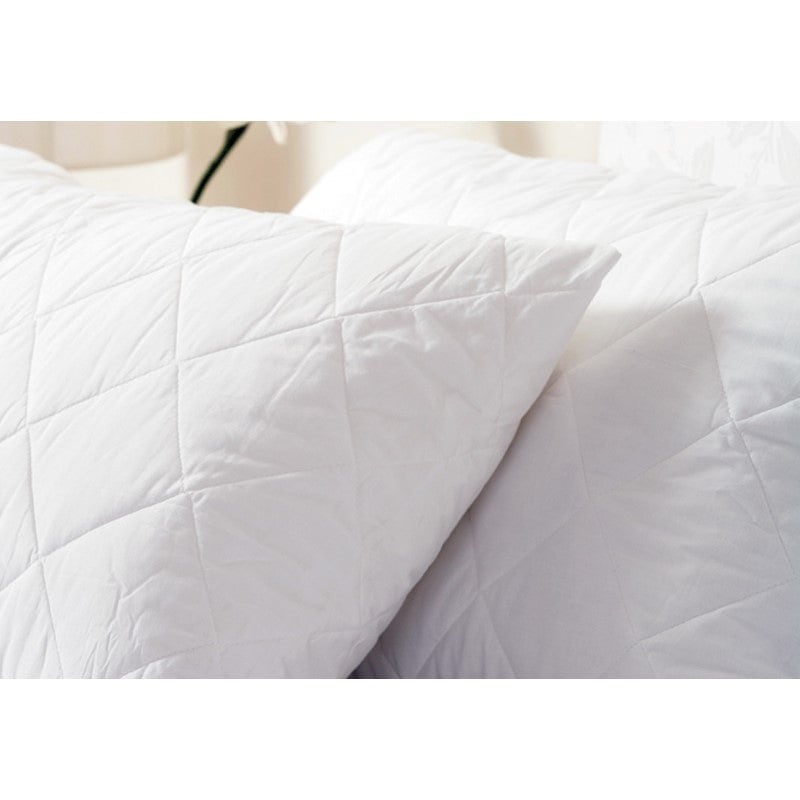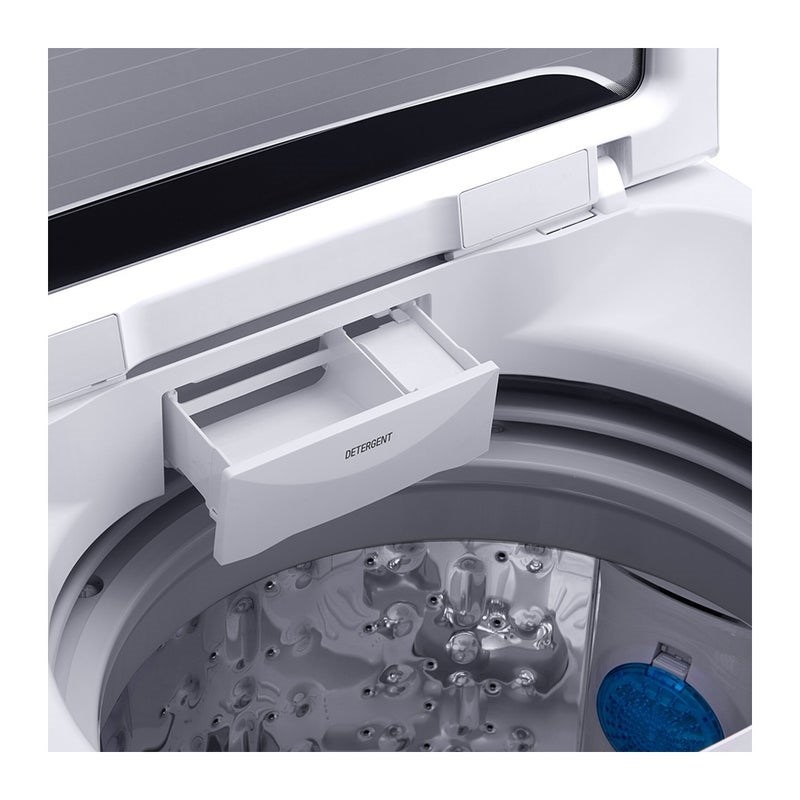You may clean your bedding every few months, but what about your pillows? Cleaning your pillows is as important if you want a bed that is clean and hygienic. It may come as a surprise, but your pillows are recommended to be thoroughly cleaned every 3-5 months depending on various factors.
Dead skin cells, dust mites, body oils, face cream and a lot more come in contact with your pillows. If not cleaned out, the build-up can lead to multiple skin problems, breathing problems, scalp and hair issues and more. So, if you want to know how to clean pillows at home, keep on reading.
Pillow protectors

A pillow protector is very useful especially when it comes to cleaning. All the dust, drool, dead skin cells and moisturiser can get absorbed within your pillow protector instead of your pillow. Unless the stain is big, your pillow would remain mostly clean with a pillow protector on it.
These protectors are available in different materials and are quite inexpensive. More importantly, pillow protectors are easy to clean. Just throw them in the washing machine and it will be as good as new. Having a protector for your pillow will ensure that your pillow remains clean for as long as possible and doesn’t require deep cleaning often.
While different materials of pillow protectors would require different care and cleaning instructions, they are easier to clean than your pillows. So, investing in one would help.
Cleaning Agents
Most pillows can be washed in the washing machine. However, the kind of cleaning agents you use can make a lot of difference. Some pillows require a milder detergent liquid while others can withstand normal powder detergents.
Ideally, cleaning agents such as bleach is very commonly suggested to clean out major spots or discolouration for pillows. We also recommend using hydrogen peroxide, distilled vinegar, dishwashing detergent or enzyme cleaners to deal with stains, spots and discolouration. These cleaners don’t harm the pillow filling material and will keep them soft and fluffy for a longer time.
How to clean pillows without a washing machine?

These instructions would normally come in handy when dealing with memory foam and bamboo pillows. Being a denser material, memory foam can easily be ruined if put in a washing machine. Just follow our step-by-step instructions on how to clean pillows without washing machines.
Dust it off!
There could be a lot of dust and debris stuck in your pillow that has been collected over a period of time. You can either hit the pillow against any surface or use a handheld vacuum cleaner to clean out the debris. Hair, dead skin cells, scalp secretions and much more can be hiding in your pillow. So, before you bring the pillow in any contact with water, a dry cleanup will make the process simpler.
Soak it up!
This step is important especially if you’re dealing with stains or spots. You can carry out this step for any pillow and not just a memory foam or bamboo one. All you need is a container that is big enough to soak your entire pillow. The pillow has to lay flat, so make sure the container is big enough. Then you simply need a hot water and detergent solution to soak the pillow. This step also helps with discolouration. While this process helps with spots and stains, you’ll require a stronger cleaner for spots that have set over time.
Tip: It is recommended to use a gentle or mild liquid detergent to clean memory foam or bamboo pillows.
You Need To Do This Next!
Cleaning memory foam or bamboo pillows can be difficult as they can be very heavy when soaked with water. So, be prepared for a bit of a workout. The soaking process should last for about an hour or two depending on how dirty the pillow actually is. The next step is to drain out the dirty water and make a fresh batch of water and detergent solution and dunk the pillow back in.
However, this time you need to constantly knead the pillow with your hands. The kneading process allows for the filling to take in more detergent and in turn clean out the dirt from every inch of the pillow. Once you are sure the detergent has reached every corner of the pillow, drain out the water and this time just clean water will do the trick.
Tip: It is easier to knead the pillow while it is submerged in water. This way you can literally see the dirt coming out of it.
Rinse! Rinse! Rinse!
The rinsing process is very much the same as the cleaning process. You just need to dunk the pillow back in the container with just clean warm water this time and knead it a bit more. Once the water runs clear and there are no bubbles forming in it, you are good to go. If there are any traces of detergent left in the pillow, it can lead to mildew.
Dry, dry till you succeed!
Using a dryer is also not an option in the case of memory foam or bamboo since it can cause the material to crumble. So, air drying is the way to go. If you have the option, lay the pillow flat under sunlight and keep flipping it every few hours. The hot water from the cleaning and the heat from the sun is an effective way of killing the bacteria in the pillow. However, if that is not an option then simply lay it on a clothes rack. Furthermore, always make sure that you squeeze out the excess water before drying it.
Also, squeeze the pillow to make sure that it is completely dry before putting it back on the bed. You do not want any moisture to be trapped in there.
Note: Always lay the pillow out on a flat surface instead of hanging it out. Hanging them will mess up the filling.
Cleaning your pillows in a washer

Synthetic, cotton, wool and down pillows can all be cleaned in the washing machine. Using a washing machine for pillow cleaning is much easier as it requires very little effort. These are some of the basic steps that you should follow when machine washing your pillows.
Step One: Spot Treatment
Spots and stains that require special attention need to be dealt with before you give the pillow a complete wash. Equal parts distilled vinegar and water solution should work on most stains. For stronger stains, you can use hydrogen peroxide and water or an enzyme cleaner. Once the stain has been soaked in the cleaner for at least an hour then you can carry on with the cleaning process.
Step Two: Prepare Your washing machine
This step is especially recommended for people who have top loaders. Fill up the tub with hot water and then put in the laundry detergent. Without any water present in the tub, the distribution of the laundry detergent within your pillows is difficult. Furthermore, if you are dealing with a discoloured pillow, you’ll need the water to add in dishwashing detergent, bleach or borax (or both) along with the laundry detergent. This combination of cleaners will turn your discoloured pillows into pristine white ones.
Step Three: Just one pillow won’t do
Depending on the size of your washing machine, you should put either 2 or 4 pillows in at the same time. The washing cycle includes a lot of tossing and turning and too much of it can damage your pillow. Hence, the addition of one more pillow will ensure lesser movement and even cleaning.
Step Four: Deep cleaning is the way to go
Always ensure that you clean your pillows on the longest cycle in your machine. Your pillows might have a lot of dirt stuck in them which needs to be thoroughly washed out. At least 2 rinses are required within one cycle to completely clean your pillow. The reason behind two rinses is that you need to flip the pillow after one rinse, giving the other side a fresh clean up.
Step Five: Dry em up!
It is important to remember what material of pillow filling you have at this stage. Down and feather pillows are not that good with heat. So, if you have a ‘dry air’ or ‘air’ setting on your washer you can use that for your down pillows. Synthetic and other materials can use a bit of heat but not too much. Dryers can get very hot and may result in creating excessive moisture which is not good for the pillows as it can lead to mildew. The goal is to release all the excess water from the pillow and air dry them to get rid of the moisture.
Tip: Fluff up the pillow in your dryer by putting in dryer balls or tennis balls. The constant bouncing of the balls will fluff up the pillow without much effort on your part.
It’s time to let go…
With general care and cleaning, your pillow can last you for a couple of years depending on what type of pillow filling you’re using. However, there comes a time when the pillow you have is just not good enough. Even with care and regular maintenance, there will eventually be a time where you have to replace it.
Your pillow may have stopped providing you with the support that your head needs resulting in a sore neck every morning or has a stain that just doesn’t go away. In this case, it is best to change to a new one.


